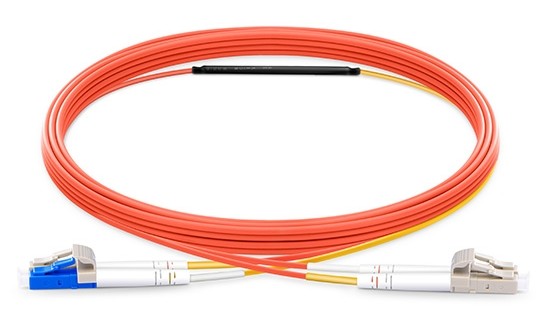Without a doubt, fiber optic cords play a significant role in fiber optic connections. The current market offers a wide range of fiber optic cables – both traditional and unique. Special solutions are usually equipped with additional protection or offer particular features, and a mode conditioning patch cable is one of them. In this article, let’s discuss what a mode conditioning patch cord is, how it works, and how to install such an optic cable.
Fiber mode conditioning cable definition
Generally, the mode conditioning patch cord works the same as a traditional patch cable. Still, it contains a specific mode-conditioning unit that consists of a cable construction with an offset multimode to the single-mode fiber connection point and duplex connectors attached to every end.
In short, the mode conditioning cable appears as a duplex multimode cord that features a small length of single-mode fiber that takes place at the beginning of the length of transmission. This cord has one multimode and one single-mode fiber on one end, while another end has two multimode fibers attached. Additionally, this mode conditioning cable suits multimode applications that have an extended length of waves, like Gigabit Ethernet.
Keep in mind that mode conditioning cables are typically utilized in pairs. A user will need to have one cable at every end to connect equipment to a specific cable plant. Apart from that, these cables feature only for single-mode to multimode conversion. Otherwise, a user will also have to stock up with a data converter.
How do mode conditioning patch cords work?
The working mechanism of mode conditioning cables is the following. The light that gets out from specific equipment starts from the single-mode fiber. This single-mode fiber links with multimode fiber to align the core. The cable receives mode conditioning features at the expense of the light that launches onto the multimode fiber at an accurate angle.
It is worth mentioning that mode conditioning cords tend to get rid of DMD. This is possible because of the offset between multimode and single-mode fibers. This results in multiple signals that allow using 1000BASE-LX transceivers instead of a multimode fiber system. It can significantly cut costs and save energy, not to mention that there is no longer a need to upgrade the entire fiber plant.
Installation of a mode conditioning fiber
Here are some steps for installing your mode conditioning patch cord:
- You need to connect a single-mode connector (typically a yellow leg) of the cord into the transmit canal of your transceiver.
- The next step is connecting the cable’s multimode connectors (orange legs) into the transceiver’s transmit bore.
- Put the multimode connectors into the patch panel at another end of a patch cable.
- Finally, you need to repeat the previous actions for another transceiver that is placed at another end of your network link.

